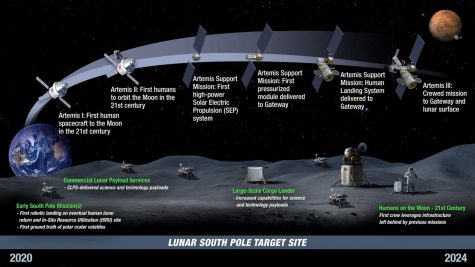Artemis
“Houston, Tranquility Base here. The Eagle has landed” on July 20, 1969, 9:56 PM Houston time, Neil Armstrong stepped off the lunar module and uttered the inspirational words, “That’s one small step for a man, one giant leap for mankind.”
The Apollo moon mission was one of the most ambitious projects in history. The project, as a whole, lasted eleven years and produced many breakthroughs. The Soviets had succeeded in sending the first man into space on April 12, 1961, prompting the discussion of the American space program and projects to gain supremacy in that field.

Visual of what future Artemis missions will do
“We choose to go to the moon. We choose to go to the moon in this decade and do the other things, not because they are easy, but because they are hard, because that goal will serve to organize and measure the best of our energies and skills, because that challenge is one that we are willing to accept, one we are unwilling to postpone, and one which we intend to win, and the others, too,” said John F. Kennedy in his famous speech.
This speech prompted the space program we know and love today: NASA. Now, 50 years later, we are going back to the moon. The new Artemis program is NASA’s plans to set up infrastructure on the moon, so it can use the station there as a waypoint on the journey to mars. This program will launch the first unmanned mission in 2024, sparking an era that might rival the space race.







